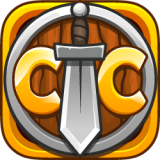Go(x)° is automatic formula solver for geocaching players.Some multicaches specify the final/stage location in form of formula, for example: N 48° 43.(B)(E-4)(A-5) E 021° 14.(C-2)(A)(D-45). Go(x)° releases geocachers from calculating on their own, writing values down and typing the result coordinates into map application by hands. Typical use case of application can be summarized as follows:1. Copy and paste a text into Go(x)°.2. If necessary, edit the text to get valid formula.3. Press Go!4. Enter required variables values.5. Tap on marker on the map to open location in your favourite map application.Formula and each variables value is stored permanently right after being entered. You can come back to your formulas to see the result, edit them or reassign values at any time - just click on item in history. At any time you can see a partial result computed with known values. If all the required values are entered and the result is in form of valid coordinates then the result is automatically shown on map from where you can send it directly to other map applications. So far there is support for recognition of coordinates in form X DD° MM.MMM Y DDD° MM.MMM only (with tolerance for white characters, °, etc.). Direct sending of coordinates to other app is supported for: Google Maps, Locus Map Pro, Locus Map Free, Waze.Rules of valid formula1. Text inside brackets is considered to be algebraic formula (with standard operators prioriry and tolerance for white charcters) containing of:- decimal constants: 3.5, 7, -4, +0.01, 4,8, -9,6, ... (values are displayed with precision to three decimal places)- variables: a, x, BBB, Q1, Q2, number_1, ... (underscore _ is the only non-alphanumeric character allowed in variable name)- operators: +, -, *, /, :, %, ^ (respectively: plus, minus, multiplication, division, division, modulo, power)- brackets and parenthesis: (), {}, [] (all three types have the same meaning)2. Text outside brackets is not considered to be algebraic formula, therefore here holds:- operators are not computed with, they are treated as plain text- variables are allowed, but their names can contain just alphabetical characters except W, E, N, S (those are reserved characters for the compass points)3. Length of formula is limited to 400 characters!ExamplesN 48° 4D.(AB*BA+CB*D) E 021° 14.(CD-2*B)ACIt is valid formula with variables AB, AC, B, BA, CB, CD, D. If individual letters stand for digits, then it is appropriate to switch to one-letter variables mode and we get variables A, B, C, D.N: 48 45. [ 108 + (ABB/15 )]E: 021 12. { 305 - [ (ABB % 15) x 2 ] + A}It is valid formula with variables ABB, A. By switching to one-letter variables mode we get variables A, B. Moreover, there is a tricky part - character x. Application will ask you about x - wheter it is the multiplication operator or not. If we choose no, then x will be treated as another variable.N 48°45.(2X)(2X+Y)(3X+2Y) E 21°12.(3+X)(X+Y)(1+Y)It is valid formula because multiplication will be automatically added everywhere the operator is missing i.e. (2X) will be changed to (2*X) or e.g. (4(a+b)) will be changed to (4*(a+b)) etc. Inserting of multiplication works inside brackets only. Notation B2 will not be changed to B*2 even inside brackets, because it will be recognized as variable B2.
Go(x)°更新内容
提升了稳定性。








































